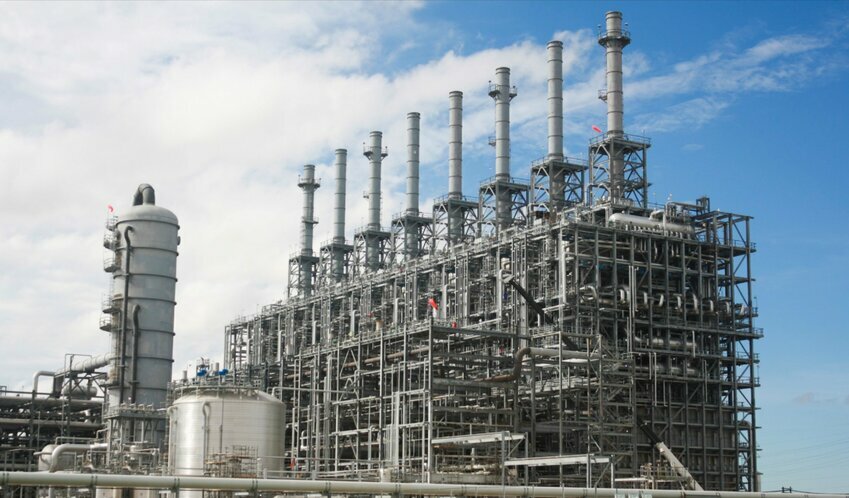
Dow Inc. is a multinational chemical company. It manufactures plastics, chemicals, and agricultural products. The Michigan-based company operates in 160 countries and has 54,000 employees. In 2017, the company merged into DowDuPont, and in April 2019, the company's parent, Dow Inc., became public. Among the company’s environmental goals are to be carbon neutral by 2050 and to drastically decrease plastic waste.
“We have crafted a portfolio that is well-positioned to meet the increasing needs of our customers and consumers who are demanding more circular and sustainable products around the world. We have a clear, science-based, disciplined, and affordable path to carbon neutrality, even while we continue to grow our capacity and improve transparency and accountability in all our sustainability efforts,” says Jim Fittlerling, chief executive, in the company’s ESG statement.
Tell us about your environmental goals.
Dow aims to be carbon neutral by 2050. Its interim goal is to reduce its CO2 emissions — for its Scopes 1 and 2 emissions — by 5 million metric tons by 2030 compared to a 2020 baseline. It says it will reduce CO2 releases by 2 million metric tons a year while growing its earnings by an estimated $2 billion by 2025.
To reach its goal, Dow increased its access to renewables by 900 megawatts. Now, more than 25% of its purchased electricity comes from clean energy. To that end, it added 132 megawatts of green energy to its portfolio through power purchase agreements that lock in prices under long-term contracts. The plan is to take the reductions that have already occurred — 15% since 2005 — and double that, extending to 2030.
For example, Dow has signed agreements in Europe, allowing eight sites in Spain, the United Kingdom, Sweden, France, and Germany to transition to 100% green electricity. Meanwhile, in Brazil, one of its sites draws 60 MW from a wind farm. And at a location in Alberta, Canada, clean energy will replace 40% of the electricity demand. Also at the Fort Saskatchewan, Alberta site, Dow is building a carbon-neutral ethylene cracker plant with a capacity of 1.8 million metric tons annually when it opens in 2027. Dow is developing carbon capture at the site in 2029.
In 2021, the company said it would build the world’s first net-zero carbon emissions integrated ethylene cracker and derivatives site at its Fort Saskatchewan, Alberta, complex. The project will triple the site’s ethylene and polyethylene capacity and decarbonize 20% of its global ethylene capacity. Cracker plants “crack chemicals,” allowing them to be transformed into usable products.
At its Terneuzen facility in the Netherlands — one of Dow’s largest integrated sites — it is going further by reducing the site’s overall carbon emissions by 40% by 2030. The plan, announced in 2021, uses technology and engineering, putting the site on a path to achieve net zero by 2050.
“We are taking a phased, site-by-site approach to reduce our carbon footprint by replacing end-of-life and high carbon-intensity assets with more carbon-efficient technologies, and by investing in carbon abatement technologies, including circular hydrogen and carbon capture and storage,” says the environmental statement.
Dow says that it monitors its Scope 3 emissions closely. They come from procuring upstream products and services from suppliers, and they are the result of downstream emissions that result from the transportation and disposal of the products it sells. Those value chain emissions represent 70% of its total emissions, making it critical that Dow partner with responsible entities.
For example, it works closely with the CDP (formerly the Carbon Disclosure Project) to collect climate data from approximately 100 suppliers — bigger ones representing 31% of its 2020 spending. It is expanding that audit to 350 suppliers this year and 500 in 2023. Meanwhile, it uses a Transportation Carbon Footprint Tracker to collect shipment data and calculate carbon emissions.
Explain Dow’s efforts to go circular.
Dow says it is improving its packaging by offering post-consumer recycled resins — items already present in the grocery store: frozen foods, cereals, and beverages. The goal is to drastically cut plastic waste. “Improving circularity of plastics through recycling and reuse is critical to a world that is also targeting carbon emissions reduction. Moving to circular products means incorporating recycling feedstocks from waste instead of more extraction of fossil fuels.”
Already, Dow’s initiatives have resulted in the collection, reuse, or recycling of 23,000 metric tons of plastic waste, up from 8,000 metric tons in 2020. It will enable 1 million metric tons of plastics to be collected, reused, or recycled by 2030. It will also permit 100% of Dow products sold into packaging applications to be reusable or recyclable by 2035.
It has invested $50 million into recycling infrastructure and key technologies to transform plastic waste into solutions that support a circular economy in the last two years. Examples:
— Dow partnered with NOVA Chemicals, LyondellBasell and Sealed Air to create a $25 million fund to invest in scalable recycling technologies, equipment upgrades, and infrastructure solutions. It is inviting businesses across the plastics value chain to participate.
— It has a similar effort in India, which will divert 6,000 metric tons of plastic waste from the environment.
— Dow is also investing in a Kenya-based recycling company, enabling 90,000 metric tons of plastic waste to be recovered and recycled into new packaging applications over four years. The enterprise will eventually create 200 direct jobs.
“Our plastics made with recycled content, bio-based and/or renewable sources reached over a hundred million dollars in sales and utilized 4,000 metric tons of renewable/circular feedstock this year,” says Dow. “With these advancements, our company will be well-positioned to provide an initial supply of fully circular polymers to customers starting in 2022, further reducing fossil fuel feedstocks by incorporating waste as the new feedstock.”